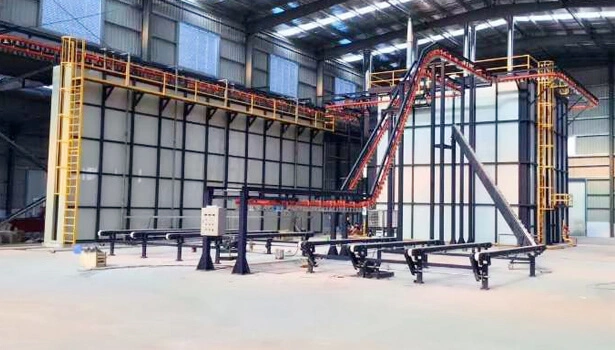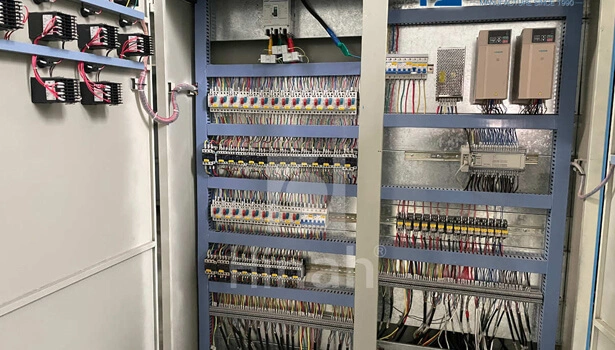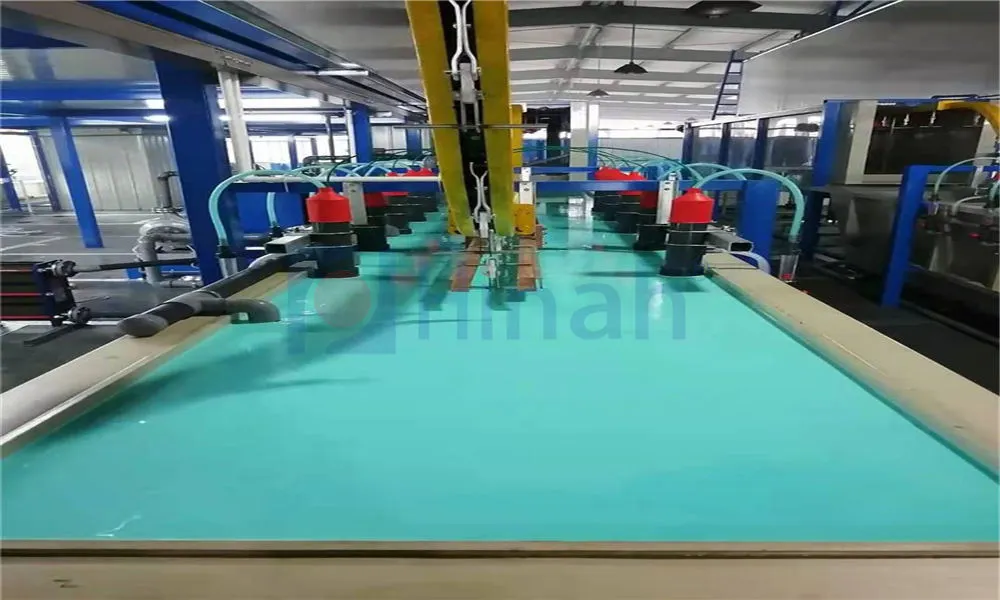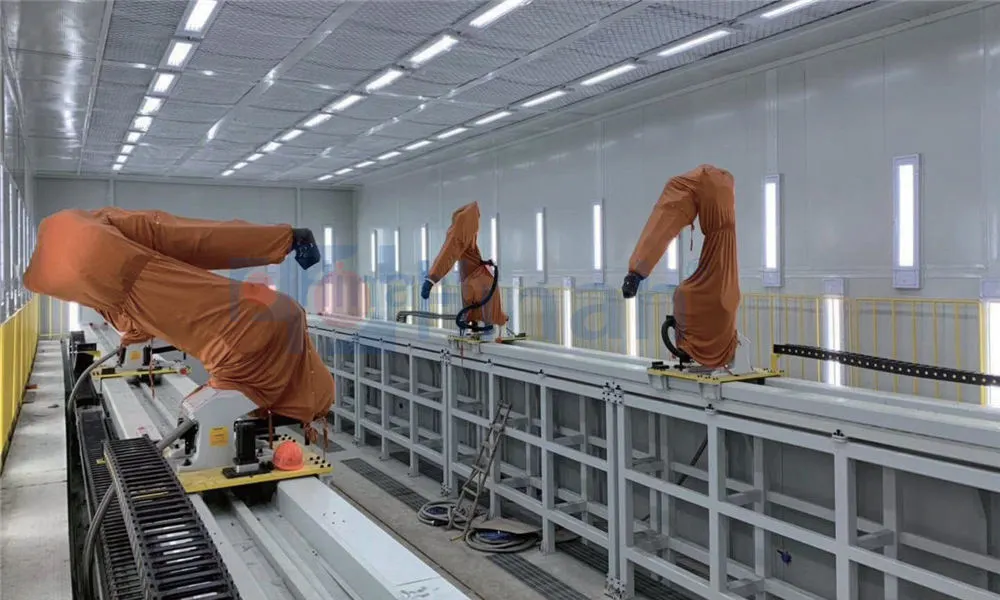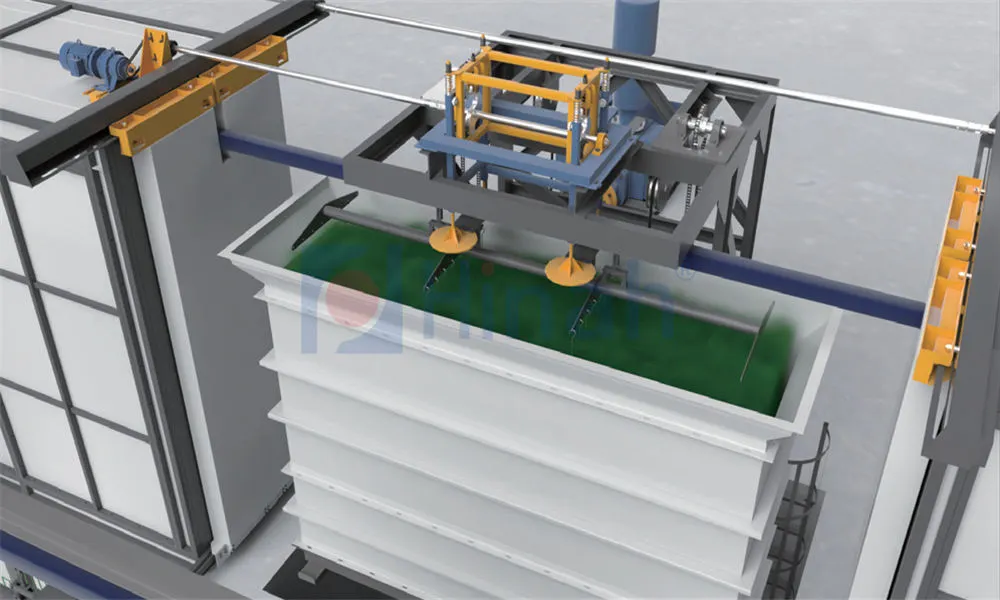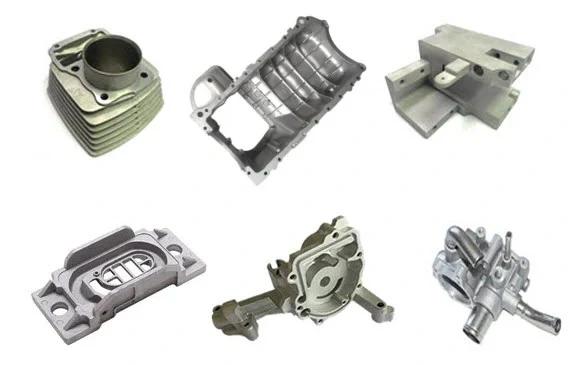Understanding the Core: What is an Automotive Body E-Coating Line?
An Automotive Body E-Coating Line is a highly automated, multi-stage pretreatment and coating system specifically designed to apply a primer coating to the entire inner and outer surface of a vehicle's body-in-white (BIW) – the bare metal structure after welding. The "E" stands for electrodeposition, the core principle driving the coating application. This process leverages electrical current to deposit paint particles uniformly onto the conductive metal surface, regardless of its complexity. The primary objective is to create a continuous, highly adherent, and exceptionally corrosion-resistant base layer that protects the vehicle from rust and underbody deterioration for its entire lifespan. The efficiency and effectiveness of the Automotive Body E-Coating Line directly impact the vehicle's quality, durability, and warranty costs.
The Step-by-Step Journey Through the E-Coating Line
The path a BIW takes through an Automotive Body E-Coating Line is a precisely choreographed sequence of cleaning, pretreatment, coating, curing, and inspection stages:
Pre-Cleaning & Degreasing: The BIW arrives coated in oils, lubricants, metal shavings, and drawing compounds from stamping and welding. Powerful alkaline or acidic cleaners are sprayed or immersed onto the body to remove these contaminants. Thorough rinsing follows.
Surface Conversion (Phosphating or Zirconium): This crucial step prepares the bare metal for optimal adhesion and enhances corrosion resistance.
Traditional Zinc Phosphate: Involves immersion in tanks containing zinc phosphate solution. A microcrystalline zinc phosphate layer forms on the steel surface, providing an excellent "tooth" for the e-coat to adhere to and acting as a sacrificial barrier.
Zirconium-based/Nanoceramic: An increasingly popular, more environmentally friendly alternative. These processes apply ultra-thin, amorphous layers of zirconium oxide or similar compounds. They offer excellent performance with reduced energy, water, and sludge generation compared to zinc phosphate.
Rinsing (Multiple Stages): After each chemical stage (cleaning, conversion), the BIW undergoes multiple counterflow rinses with deionized (DI) water to remove any residual chemicals or contaminants. This prevents contamination of subsequent baths and ensures coating quality.
DI Water Rinse & Final Rinse: A final spray or dip with pure DI water ensures absolute cleanliness and prevents spotting before entering the e-coat bath.
Electrodeposition (E-Coat Bath): The heart of the Automotive Body E-Coating Line. The cleaned and pretreated BIW, acting as an electrode, is immersed in a large tank filled with a water-based paint emulsion containing charged resin particles (usually cathodic epoxy for automotive). An electrical current is applied between the BIW (cathode) and anodes strategically placed within the tank. The charged paint particles migrate through the water and are deposited uniformly onto the entire conductive surface of the BIW. The process continues until the desired film thickness (typically 15-25 microns) is achieved. The self-limiting nature of the process (insulating layer forms) helps achieve uniform thickness even on complex geometries and recessed areas ("throwing power").
Ultrafiltration (UF) Rinses: As the BIW exits the main e-coat tank, it carries excess, un-deposited paint (called "drag-out"). Multiple rinse stages using ultrafiltrate (permeate from the UF system) recover this valuable paint. The UF system continuously filters the bath, removing impurities and water, while returning concentrated paint to the main tank. This minimizes paint waste and controls bath chemistry.
Final DI Rinse: A final DI water rinse ensures no residual salts or contaminants remain on the wet film.
Drain & Drip-Off: The body is held in specific orientations to allow excess rinse water and paint to drain effectively, minimizing carryover to the oven.
Baking/Curing: The coated BIW enters a large, multi-zone convection oven. Here, the water evaporates, and the paint film undergoes a cross-linking chemical reaction (curing) at temperatures typically ranging from 160°C to 190°C (320°F to 375°F). This transforms the deposited film into a hard, durable, chemically resistant, and fully adherent primer layer.
Cooling: After curing, the body passes through a cooling zone to bring it down to a temperature safe for handling and subsequent processes (like seam sealing or primer surfacer application).
Inspection & Quality Control: At various points, but critically post-cure, automated and manual inspections occur. Techniques include:
Film Thickness Measurement: Using magnetic induction or eddy current gauges.
Adhesion Testing: Cross-hatch or pull-off tests.
Visual Inspection: Checking for runs, sags, craters, dirt inclusions, or bare spots (holidays) – often using specialized lighting or automated vision systems.
Corrosion Testing (Lab/Samples): Salt spray testing on coated panels to verify performance.
The Technological Backbone of the E-Coating Line
A modern Automotive Body E-Coating Line integrates numerous advanced technologies:
Material Handling: Sophisticated overhead conveyors (Power & Free, Skid, EMS) precisely transport BIWs through each stage, controlling immersion angles, speed, and transfer between zones.
Tank Design & Agitation: Tanks are constructed from specialized materials (stainless steel, plastics) resistant to harsh chemicals. Sophisticated agitation systems (paddle, eductor, sparge) ensure bath homogeneity and prevent settlement.
Filtration Systems: Bag filters, cartridge filters, and crucially, Ultrafiltration (UF) systems maintain bath purity and enable paint recovery.
Rectification & Anode Systems: High-precision DC power supplies provide the electrical current. Anode systems (often tubular membranes) are critical for controlling current density and film build distribution. Closed-loop anode systems minimize acid mist.
Oven Technology: High-efficiency convection ovens with precise temperature control in multiple zones ensure complete and uniform curing without overheating sensitive areas.
Process Control & Automation: Sophisticated PLC/SCADA systems continuously monitor and control thousands of parameters: chemical concentrations (via titration, conductivity, pH), bath temperature, voltage/amperage profiles, conveyor speed, oven temperatures, UF pressures/fluxes. Automation ensures consistent quality and minimizes operator intervention.
Environmental Control Systems: Comprehensive ventilation, scrubbers, and waste treatment systems handle fumes, overspray (minimal in dip), and wastewater generated by the line.
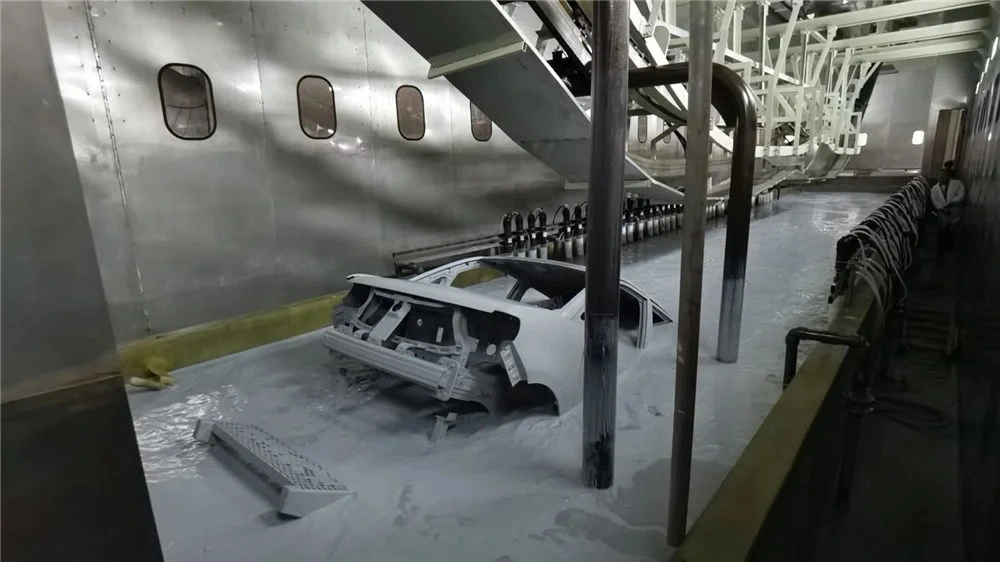
The Compelling Benefits: Why E-Coating is Non-Negotiable
The Automotive Body E-Coating Line delivers indispensable advantages:
Unmatched Corrosion Resistance: The primary benefit. The electrodeposition process ensures complete coverage of all surfaces, including seams, crevices, box sections, and the underside – areas impossible to coat effectively by spray methods. The cured film provides an exceptional barrier against moisture, salts, and road chemicals.
Superior Uniformity & Edge Coverage: The electrophoretic nature of deposition results in remarkably uniform film thickness, even on sharp edges and complex geometries. This prevents premature corrosion failure at vulnerable points.
Exceptional Adhesion: The combination of thorough cleaning, surface conversion, and the electrochemical deposition process creates an extremely strong bond between the primer and the metal substrate.
High Material Utilization & Efficiency: The electrodeposition process is highly efficient (typically >95% material utilization). Paint not deposited remains in the bath for reuse. UF rinse systems recover drag-out, minimizing waste.
Automation & Labor Efficiency: The entire process is highly automated, requiring fewer operators compared to manual spray primer application. It integrates seamlessly into high-volume production lines.
Enhanced Safety (Compared to Solvent Spray): Modern e-coats are water-based and contain very low or zero VOCs (Volatile Organic Compounds), significantly reducing fire hazards and operator exposure to harmful solvents compared to traditional spray primers.
Foundation for Topcoats: The smooth, uniform, and highly adherent e-coat layer provides the perfect base for subsequent primer surfacers, basecoats, and clearcoats, ensuring the overall quality and longevity of the vehicle's finish.
Ensuring Perfection: Quality Control in the E-Coating Line
Maintaining consistent, high-quality output from an Automotive Body E-Coating Line demands rigorous quality control:
Bath Chemistry Management: Continuous monitoring and adjustment of parameters like pH, conductivity, solids content, pigment/binder ratio, and contamination levels in all chemical baths (cleaners, phosphating/zirconium, e-coat) are critical. Automated titration systems and lab analysis are standard.
Process Parameter Monitoring: Real-time tracking and alarming of immersion times, conveyor speeds, electrical parameters (voltage, amps, time), oven temperature profiles, UF performance, and rinse water purity.
Film Property Testing: Regular checks on cured film thickness (at multiple points per body), adhesion (cross-hatch), hardness (pencil), and flexibility (impact, bend tests). Salt spray testing on witness panels provides accelerated corrosion performance data.
Visual & Automated Inspection: High-intensity lighting booths and increasingly, automated vision systems, scan bodies for defects like pinholes, craters, dirt, sags, or bare spots. Holiday detectors (high-voltage spark testers) identify pinholes or thin spots in the cured film.
Data Management: Centralized systems collect and analyze vast amounts of process and quality data, enabling traceability, trend analysis, predictive maintenance, and continuous improvement.
Environmental Impact and Sustainability Trends
Modern Automotive Body E-Coating Lines are designed with significant environmental considerations:
Reduced VOC/HAP Emissions: Water-based e-coat materials have dramatically lower VOC and HAP (Hazardous Air Pollutants) emissions compared to solvent-based spray primers. Many lines now use VOC-free or ultra-low VOC e-coats.
Advanced Pretreatment: Zirconium/nanoceramic pretreatments eliminate heavy metals (like zinc and nickel in traditional phosphate) and significantly reduce sludge generation, water consumption, and energy use compared to zinc phosphating.
Water Conservation: Counterflow rinsing designs and UF systems drastically reduce fresh water consumption. Many lines incorporate extensive wastewater treatment and recycling loops.
Energy Efficiency: Innovations include high-efficiency oven design (improved insulation, heat recovery), optimized pumping systems, and smarter process control to minimize energy use.
Waste Reduction: High paint utilization (via electrodeposition and UF recovery), sludge minimization (through improved pretreatment), and effective waste treatment/recycling programs are key focuses. The shift towards lead-free and chrome-free e-coat materials further reduces environmental hazards.
Renewable Energy Integration: Some newer plants are integrating solar power or purchasing renewable energy credits to power energy-intensive processes like the e-coat oven.
Conclusion
The Automotive Body E-Coating Line is far more than just a painting step; it is a sophisticated, technology-driven cornerstone of modern vehicle manufacturing. Its ability to provide unparalleled corrosion protection through uniform, adherent, and complete coverage of the vehicle body is fundamental to vehicle longevity, safety, and brand reputation. While the core electrodeposition principle remains constant, continuous advancements in pretreatment chemistries, e-coat materials, process control, automation, and environmental technology make the modern Automotive Body E-Coating Line a marvel of efficiency and sustainability. As the automotive industry evolves towards electric vehicles and ever-higher quality standards, the critical role of the e-coating process in protecting the vehicle's core structure remains absolutely indispensable. It is the unseen shield that allows the beauty and performance of the vehicle to endure for years on the road.



